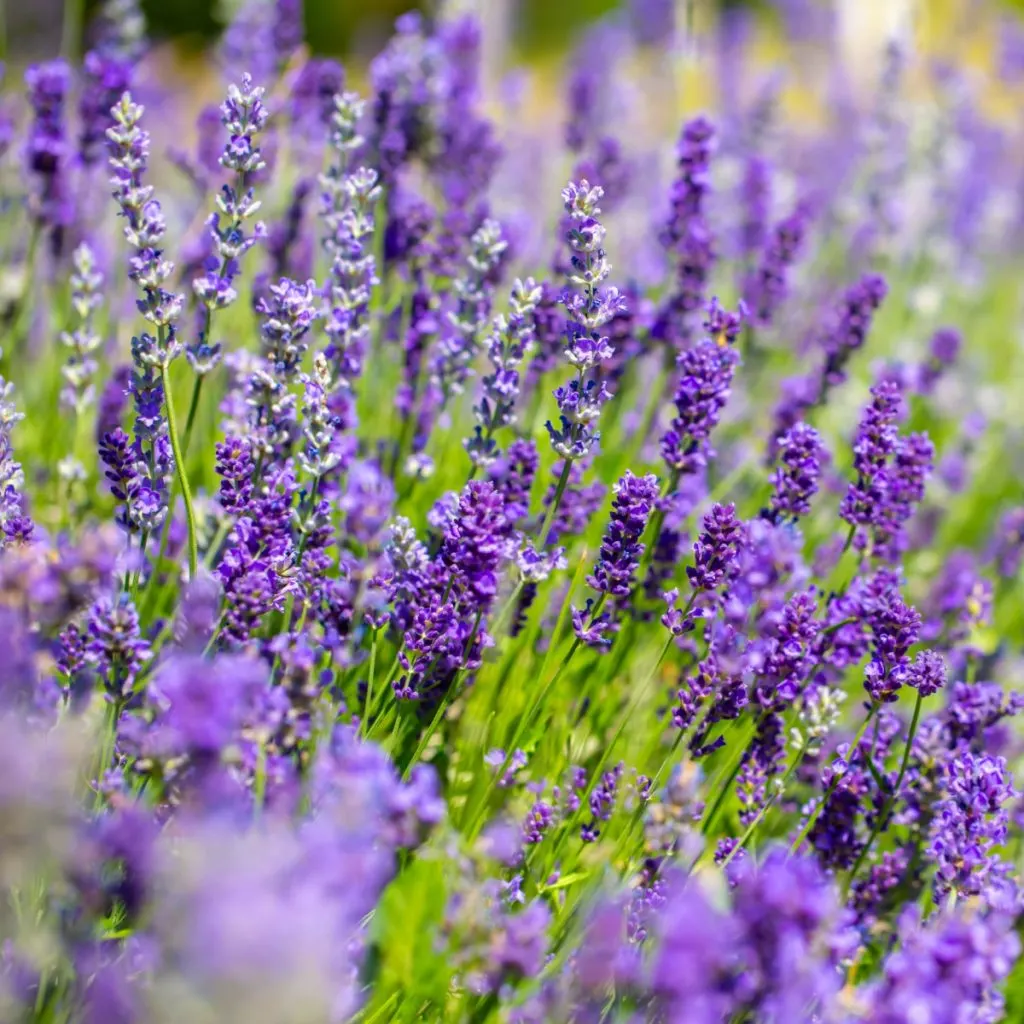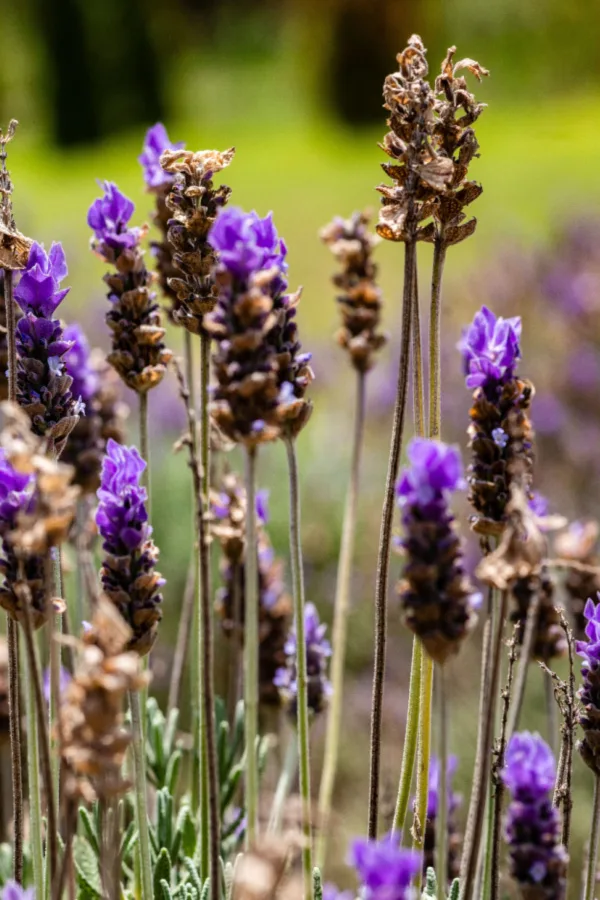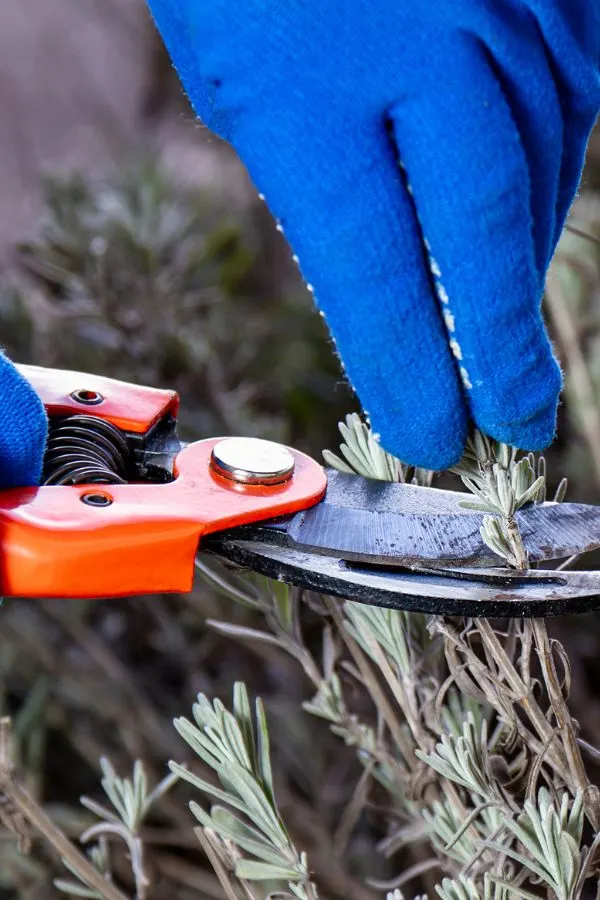Did you know that with just a little bit of care and attention, you can get your lavender to bloom again for a second time in the same growing season?
Lavender has become quite the popular perennial to grow in home landscapes. Not only is the plant highly drought tolerant, it is also incredibly insect resistant as well. Even better, squirrels, chipmunks, rabbits and even deer leave this beautiful flowering perennial alone as well.
But if all of that wasn’t enough – lavender is also one of the best plants for attracting pollinators. Both butterflies and bees flock to it. In fact, when planted near vegetable gardens and in flowerbeds, it can be incredibly beneficial for helping to pollinate other crops and flowers.

But what really makes lavender stand out are its amazing blooms. Depending on where it grows, lavender will come into bloom anywhere from May to mid June. With its soaring stocks of vibrant purple flowers, and its ever pleasant scent, it can light up the landscape.
Once in bloom, lilacs will flower strong for anywhere from three to even four weeks. But once they begin to finish their bloom set, it’s time to jump into action – because with just a few simple chores – you can set your lilacs up to bloom again. And if you are really lucky, sometimes even set them up for a third bloom as well!
How To Get Lavender To Bloom Again
The key with getting lavender to bloom one or two more times in a single growing season all comes down to two important factors.
The first is the age of the plant. As long as lavender plants are between one and five years of age, they will have little issue blooming multiple times in a season. As lavender starts to age, it also begins to get a bit more woody. And when that occurs, multiple bloom sets can be a bit harder to come by without major pruning or division. (More on that topic later)
The second biggest factor in getting multiple blooms is how quickly the old blooms are removed from the plant. Deadheading, which is the practice of removing or shearing off old blooms, is one of the biggest keys of all in getting your lavender to rebloom.

The simple fact of the matter is that once lavender blooms start to fade, the longer those old blooms stay on the plant, the more energy they take from it. Unfortunately, even though no amount of nutrients can heal dying blooms, the plant will still send energy to try to heal them.
That is exactly why deadheading as soon as your lavender blooms pass the “pretty” stage is vital to re-blooming.
How To Prune Lavender After It Flowers – How To Get Lavender To Bloom Again
How you deadhead or prune your lavender back all depends on its size. Very young lavender plants usually have a very small but tight set of blooms.
To remove, simply snip below the bloom stems back to the first set of healthy leaves. These are usually quite easy to remove with a pair of garden scissors or light pruning shears. Affiliate Product Link: 3 Pack Garden Pruning Shears, Stainless Steel Garden Shears
For a bit more mature lavender plants with a lot of blooms covering a large surface area – pruning with gardens scissors or pruners can be a time intensive process. For these larger plants, it’s usually easier and faster to use a sharp pair of hedge shears.

Simply cut off below the canopy of blooms to healthy leaves. Do not cut the bush back far, just snip off below the bloom lines to shape the plant. This will instantly stop the drain of resources the plant is using on old blooms – and cause it to instead start preparing to set new blooms.
Watering, Fertilizing & Post Bloom Maintenance – How To Get Lavender To Bloom Again
Here is the great news when trying to get lavender to bloom again – deadheading is not only the most important chore – it’s really the only important chore!
Why? Because unlike many other flowering perennial plants, lavender does not need to be fertilized after it blooms to get it to bloom again. In fact, fertilizing your plants actually will give it less chance to flower for a second time.
Lavender simply doesn’t require nutrient dense soil to perform. And when it gets too many nutrients, it actually will shut down the process of creating new blooms.
Even better, lavender also happens to be highly drought tolerant. And because of that it, it prefers drier soil to frequent waterings. Much in the same way that too many nutrients can cause lavender to stop blooming, so can too much water.

Only water lavender plants if you are experiencing extreme drought like conditions. If and when you do have to water, water fairly lightly and allow the soil to completely dry out before watering again. Again, less is more when it comes to water for lavender.
One thing you can do for your plants is to make sure they are getting adequate sunlight. Lavender needs at least six hours of full sunlight to bloom best. That is why when planting in beds, always plant in the sunniest locations of your landscape. And if growing in pots – place them in a full sun area that gets at least 6 hours of direct sunlight.
How To Bring Older Lavender Plants Back To Life – How To Get Lavender To Bloom Again
So what can you do with older lavender plants to help bring them back to life? Unfortunately, lavender plants become quite woody and overgrown as they start to age past five to six years.
As the stems grow longer and longer, they also start to split. When this occurs, it can severely impact its blooming ability. The only way to help the plant at this point is with major pruning. This is best done in early to late fall for mature lavender plants. See: What To Do With Your Lavender Plants Before Winter – Fall Lavender Care
With major pruning, it’s best to cut back the plant to within 2 to 3 inches above where the stems are woody. If the plant is completely out of control, you can cut back more. It will take a bit more time to recover for blooming, but sometimes it’s the only option to gain back control.
Here is to getting the most out of your lavender this year – and getting it to bloom again!
This Is My Garden
Follow Our Facebook Page For Great Gardening Tips And Advice! This Is My Garden Facebook Page
This Is My Garden is a garden website created by gardeners, for gardeners. Jim and Mary Competti have been writing gardening, DIY and recipe articles and books and speaking for over 15 years from their 46 acre Ohio farm. They publish three articles every week, 52 weeks a year. Sign up today to follow via email, or follow along!
